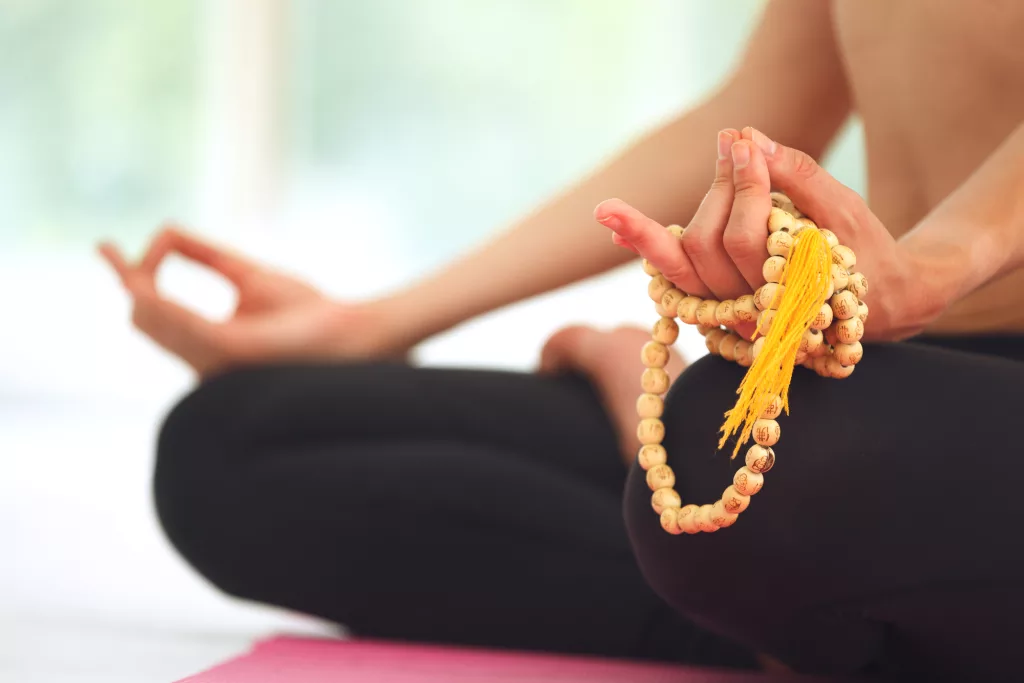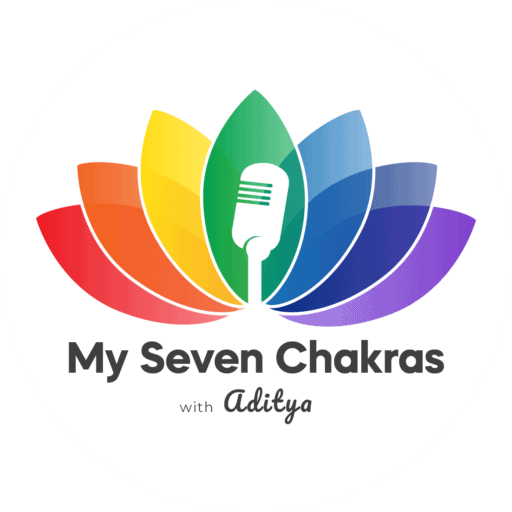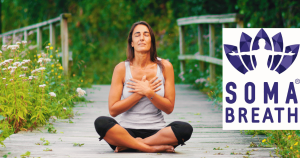5 Proven Breathing Techniques For Sleep: 2023
Last Updated: February 18, 2023 | by Aditya Jaykumar
Are you having trouble sleeping? You’re not alone.
Stress, overstimulation, and the demands of daily life often contribute to disrupted sleep for many people.
If tossing and turning have become your nightly ritual, it’s time to try something different!
Consider incorporating one (or more!) of these nine soothing breathing techniques for sleep into your nightly routine.
They are known to reduce stress levels and slow down an active mind so you can finally drift off into a restful slumber!
What are breathing exercises for sleep?
Find it hard to sleep at night?
One major challenge preventing you from getting a good night’s rest is shallow breathing.
Breathing exercises for sleep are relaxation techniques that can help correct your normal breathing patterns and promote relaxation before bedtime.

They involve focusing on the breath as it moves through the body to achieve a state of calmness and peace. These techniques can be used alone or with other calming activities such as yoga, meditation, stretching, or mindfulness practices.
With regular practice, this evening routine can improve quality of life by reducing insomnia symptoms and feelings of grogginess in the mornings.
4-7-8 technique
Popularized by Dr. Andrew Weil, the 4-7-8 technique is a breathing technique proven to reduce stress levels, allowing you to drift off into a restful slumber.
This simple technique involves inhaling through the nose and breathing into your diaphragm to activate a relaxing, parasympathetic response.
It consists of four steps: inhaling deeply through the nose for four seconds, holding your breath for seven seconds, then exhaling slowly out of your mouth for eight seconds.
Repeat this cycle four times and feel your body relax with each breath.
Box Breathing
Slow your breathing and reduce stress with box breathing, also known as square breathing!
Employ this deep breathing technique to unlock many benefits that can help you better manage physical, mental, or emotional distress.
Navy seals and firefighters, who endure intensely stressful positions, often rely on box breathing to de-stress when their body is in fight-or-flight mode. This technique is also useful for anyone wishing to recenter their focus or amplify concentration.

This technique consists of four steps: inhale deeply for four seconds, hold your breath for four seconds, slowly exhale out of your mouth for four seconds, then pause briefly before beginning again.
For maximum efficiency, it’s suggested that one should repeat these three steps for up to four minutes or until a sense of tranquility is restored.
Abdominal breathing
Abdominal breathing, or Diaphragmatic breathing as it is sometimes called, is a fantastic exercise for building the strength of your diaphragm and maximizing each breath you take.
This technique involves breathing into your belly rather than your chest, which activates the vagus nerve. Doing so puts you in a parasympathetic state of rest and digestion, conducive to sleep.
It consists of two steps: inhale deeply while expanding your abdomen for four seconds, then exhale through your mouth for 8 seconds. Repeat this cycle for 5-7 minutes until you feel more relaxed and calm.
As you’re breathing, inhale through your nose and exhale out your mouth. Focus on the sound of your breath and the rise and fall of your abdomen.
With regular practice over time, this technique will train your nervous system to slow down your heart rate and prepare for a good night’s rest. You will also notice ripple effects in other areas of your life!
Mantra Chanting
Do you even ‘Om’, bro?
Mantra chanting is an ancient practice used for centuries to help people relax and get a good night’s sleep.
Chanting mantras helps to calm the mind, lower blood pressure, and create a peaceful atmosphere conducive to restful sleep.
Chanting activates the vagus nerve that sends harmonizing signals across the body and lowers cortisol levels in the blood.
Studies have also shown that mantra chanting can reduce anxiety, improve mental clarity, and boost moods. So if you’re having trouble sleeping at night or want inner peace in your life, then mantra chanting could be the perfect solution!

Generally, mantras are short phrases that focus on positive thoughts or feelings. In the Vedas (ancient Indian texts), mantras were carefully selected based on their healing, vibratory and transcendental properties.
Some popular mantras include “Om Mani Padme Hum,” which is a Buddhist mantra for peace; “Nam Myoho Renge Kyo”, another Buddhist mantra or even “Hare Krishna, Hare Ram”, a popular mantra used by Indians around the world!
Other popular mantras include “Om Shanti,” “Om Namah Shivaya,” and “Aham Brahmasmi.”
When chanting a mantra, it is important to relax your body and mind. The best way to do this is by sitting in a comfortable meditation pose, like a lotus position, or even lying down on your back.
Once you are comfortable and relaxed, focus on inhaling and exhaling deeply through your nose for several minutes. Focus on your breath and try to breathe into your lower belly.
As you do this, begin chanting the mantra of choice softly and slowly.
Concentrate your energy on the words and let go of any lingering thoughts or feelings without judgment.
Chant for at least 10-15 minutes each day, especially at dawn, and notice how you feel afterward!
Alternate Nostril Breathing
Alternate nostril breathing is an ancient yogic breathing practice known as Nadi Shodhana.
This practice helps activate the parasympathetic nervous system and balance both brain hemispheres.
This effective ancient technique works by alternating between the left and right nostrils, creating a more balanced flow of energy throughout the body.
The left nostril is connected to the right brain, which is more creative, intuitive, and visual. On the other hand, the left nostril is connected to the left brain, which is more logical, abstract, and linear.
In other words, practicing this technique can help you regularly function your brain and prepare your nervous system for a good night’s rest.
It’s fascinating how our ancient elders intuitively knew what modern science is just beginning to discover!
The practice of alternate nostril breathing involves inhaling through one nostril while exhaling through the other in a rhythmic pattern.
To begin, sit in a comfortable position with your spine straight and eyes closed.
Take your right index finger, place it between your eyebrows, and then use your thumb to close the right nostril.
Inhale slowly through the left nostril, ensuring that you inhale all the way down into your abdomen. Close both nostrils with your fingers, and hold your breath for a few seconds.
Release your thumb from the right nostril and exhale slowly through it. Repeat this process, alternating between left and right nostrils for several minutes.
When finished, sit quietly with your eyes closed to observe how your body feels.
Regular practice allows you to experience a calmer mind and more balanced emotions.
Breathing Techniques For Sleep: Frequently Asked Questions (FAQs)
Does the 4-7-8 trick work?
Dr. Andrew Weil developed the 4-7-8 technique as an effective way to reduce stress and promote better sleep.
This relaxation technique involves taking a slow and deep breath through the nose while counting to four, holding your breath for seven seconds, then exhaling slowly through the mouth for a count of eight.
Many people have found that this technique helps them fall asleep faster and stay asleep!
What does the 4-7-8 breathing technique do?
The 4-7-8 breathing technique helps you fall asleep quickly!
The 4-7-8 breathing technique uses a combination of breath control and long exhales to activate your parasympathetic system and lower cortisol levels, allowing you to prepare for a good night’s rest.
The counting involved helps you stay focused and mindful while doing this exercise. Especially if you find yourself preoccupied with distracting thoughts from the day, this technique helps you let go of them.
What is the 5 5 5 breathing Method?
The 5-5-5 breathing method can easily lower blood pressure, calm nerves, and prepare for sleep.
It involves inhaling for a count of five, holding your breath for 5 seconds, and exhaling for another count of five.
This breathing cycle creates a state of heart coherence that instills a sense of balance and clarity.
From a numerology standpoint, 555 stands for freedom, adventure, and transition, so it is a powerful number to breathe to!
What type of breathing helps you fall asleep?
All the techniques listed in this article will help you fall asleep. However, my favorite breathing exercise is abdominal breathing or belly breathing.
This type of breathing involves taking slow and deep breaths from the stomach instead of from the chest. Breathing into your belly activates your vagus nerve which sends a harmonizing, relaxing signal across your body.
This is a yin-based, calming practice that is suitable for both beginners and experienced breath practitioners.
Additionally, this type of breathing helps strengthen your abdominal and intercostal muscles, which can improve your overall posture with practice!
Wrapping Up
Falling asleep can be challenging sometimes, but with the right techniques and approach, it doesn’t have to be.
Abdominal breathing is my favorite technique that helps relax the body so you can drift off into sleep easier.
Other breathing techniques for sleep, such as the 4-7-8 breathing exercise or box breathing, focus on controlling your breath to improve the oxygenation of the tissues, helping you wind down for sleep.
Finally, alternate nostril breathing is an excellent practice to balance both brain hemispheres and experience deep tranquility at will!
So give them all a try – they might work like magic!
Finally, let us know in the comments below. What’s your favorite breathing technique for sleep? Have we missed any in our article?






Leave a Reply